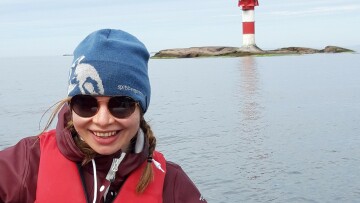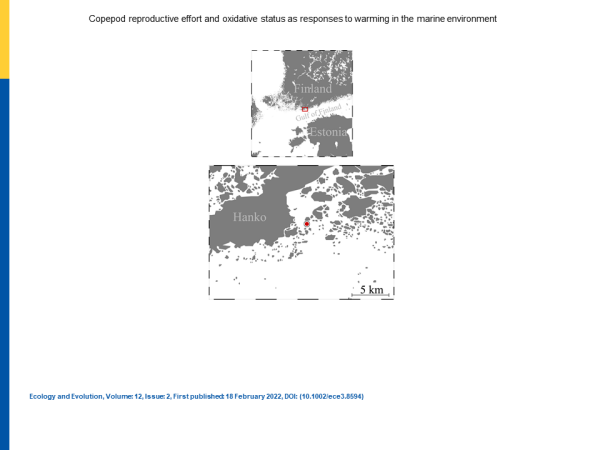Copepod reproductive effort and oxidative status as responses to warming in the marine environment

The Research Article "Copepod reproductive effort and oxidative status as responses to warming in the marine environment" was published in Ecology and Evolution on 18 February.
DOI: https://doi.org/10.1002/ece3.8594
Abstract
The marine ecosystems are under severe climate change-induced stress globally. The Baltic Sea is especially vulnerable to ongoing changes, such as warming. The aim of this study was to measure eco-physiological responses of a key copepod species to elevated temperature in an experiment, and by collecting field samples in the western Gulf of Finland. The potential trade-off between reproductive output and oxidative balance in copepods during thermal stress was studied by incubating female Acartia sp. for reproduction rate and oxidative stress measurements in ambient and elevated temperatures. Our field observations show that the glutathione cycle had a clear response in increasing stress and possibly had an important role in preventing oxidative damage: Lipid peroxidation and ratio of reduced and oxidized glutathione were negatively correlated throughout the study. Moreover, glutathione-s-transferase activated in late July when the sea water temperature was exceptionally high and Acartia sp. experienced high oxidative stress. The combined effect of a heatwave, increased cyanobacteria, and decreased dinoflagellate abundance may have caused larger variability in reproductive output in the field. An increase of 7°C had a negative effect on egg production rate in the experiment. However, the effect on reproduction was relatively small, implying that Acartia sp. can tolerate warming at least within the temperature range of 9–16°C. However, our data from the experiment suggest a link between reproductive success and oxidative stress during warming, shown as a significant combined effect of temperature and catalase on egg production rate.
Photo: (Figure 1)Map of the study area in Hanko, Finland. The red dot shows the sampling site in Storfjärden, which is close to Tvärminne Zoological Station. Ocean Data View was used for creating the map (Schlitzer, 2016)
